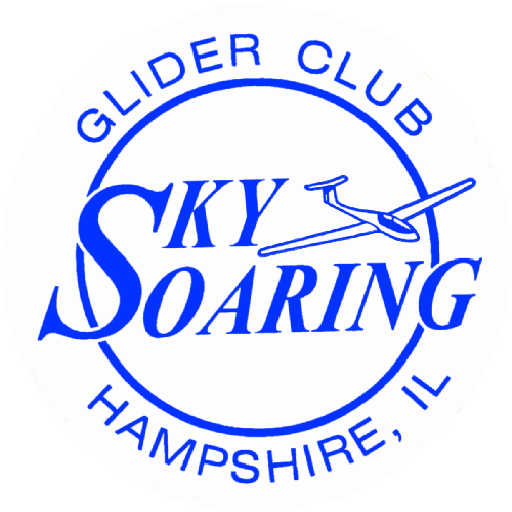Forum Replies Created
-
AuthorPosts
-
 John LincolnParticipant
John LincolnParticipantI will be out around 10:30 to 11. Hoping we have a tow pilot and an instructor. The weather looks good albeit a bit on the cool side. John Lincoln
 John LincolnParticipant
John LincolnParticipantI’ll be out as well. John Lincoln
 John LincolnParticipant
John LincolnParticipantAll, I just watched the “Most common Spins” Video. Very instructive, even for me. We all need to remember that it’s NOT the rudder that turns the glider but the wings. The rudder keeps the flow perpendicular to the wings. It was very instructive to see the horizon remain in the “proper place” while the yaw string moved way off center (and the stick was pulled back) resulting in a spin. So if your attitude looks right but your controls are messed up you could easily be heading for a spin. Thanks Steve for the link! John Lincoln
 John LincolnParticipant
John LincolnParticipantLincoln here. I attended the webinar last night. It was instructive. I found a few things I was happy were pointed out. For me transition training should be about what you need to do and know to be certain that you are able to safely assemble, move, FLY and dissemble the sailplane in question. There was information on the above subjects but not enough in my opinion. There was a lot of discussion of FAR’s. I, personally, don’t think FAR’s help in transitioning from one sailplane to another. I noticed that in the transition phase the most accidents happened because of pilot errors in the flying phase of flight. I’m certainly no expert but I have transitioned into 17 different sailplanes from the SGS 2-22 to the Nimbus 3. For me the biggest emphasis needs to be on flying first and assembly second. I have a protocol that I use and will continue to use. I wish the webinar had spent more time emphasizing thinking about the flying phase and then assembly phase of a transition. That’s where most of the accidents happen so that’s where I would have put the emphasis. Steve, these are my opinions and comments. I hope I haven’t offended anyone.
 John LincolnParticipant
John LincolnParticipantAndy has found just exactly what it was like to launch on a dusty dry runway. Basically IMC conditions for the first 8 to 10 seconds. Seems scary the first time or two that you do it. You can actually learn how to keep the wings level while making this kind of launch. If you do this you will notice that while you can’t see the horizon you can (and I did) notice that if you looked up 20 to 30 degrees the sky is lighter. Keep the wings level and sort of horizontal to that lighter sky while also following the tow rope and you’d be ok. After the tow plane gets going the amount of dust goes down and the IMC condition disappears. The biggest down side is your sailplane is covered with dust. (So much for cleaning it before takeoff.) And now you all know why the glider operations in Arizona that use tow planes to launch also use paved runways to launch. Merry Christmas John Lincoln
PS. Andy, just one small under powered Reindeer! I might be a bit late Steve. Can I have a couple more hours!
 John LincolnParticipant
John LincolnParticipantAnd be careful rigging/derigging in this weather, frozen fingers, noses, ears. Yep, Don has a good call there! This way Rich can save his medical help for another day. John L
 John LincolnParticipant
John LincolnParticipantI am sorry I missed Steve Snyder on the Saturday work list of members who were there. It’s entirely my fault. I even had him on my list and still missed him! Again I apologize, Steve and to the members. John Lincoln
 John LincolnParticipant
John LincolnParticipantI’ll be out too. See you at 10:30. John Lincoln
 John LincolnParticipant
John LincolnParticipantIf we have a tow pilot I plan to be out around noon. Having my snow plow being fixed in the morning, ugh!!! If no tow pilot maybe Saturday? SkySight forecasts Friday winds SSW at 14 to 18 kts. and Sunday winds S at 18 to 20 kts. ouch!!! Saturday S at 9 to 12 kts.
 John LincolnParticipant
John LincolnParticipantSteve, thanks for keeping us informed about the weather and flying. At this time I’m not planning on flying. John Lincoln
 John LincolnParticipant
John LincolnParticipantMembers,
Thanks for all your work. John D and John O for work on the winch lights, both Saturday and Thursday. Also on the winch thanks to Don, John O, John D and Steve for getting the stainless steel covers on. Thanks to Petr for his work on the electrical systems in the hangar. Thanks to John P for mowing the alfalfa field although it’s premature. Please wait to restart that project until at least mid to late October. Thanks to Don and Gary for looking into the repair of the 1-26E elevator. It is still grounded. Thanks to Jimbob for a couple of suggestions that should make making the repair easier. Steve was out mowing the other day. A big thanks to Rich Walenda for keeping our first aid kits up and current and for all the FREE first aid training he has dispensed. Like he has said, it takes all of us to run and maintain this club. A note of interest for all of us, The hangar roof will start to be repainted (weather permitting) on October 3rd. John Lincoln, Maintenance
 John LincolnParticipant
John LincolnParticipantOops, I quoted the winds wrong, NE to N instead of NW to N. Sorry, John
-
AuthorPosts
